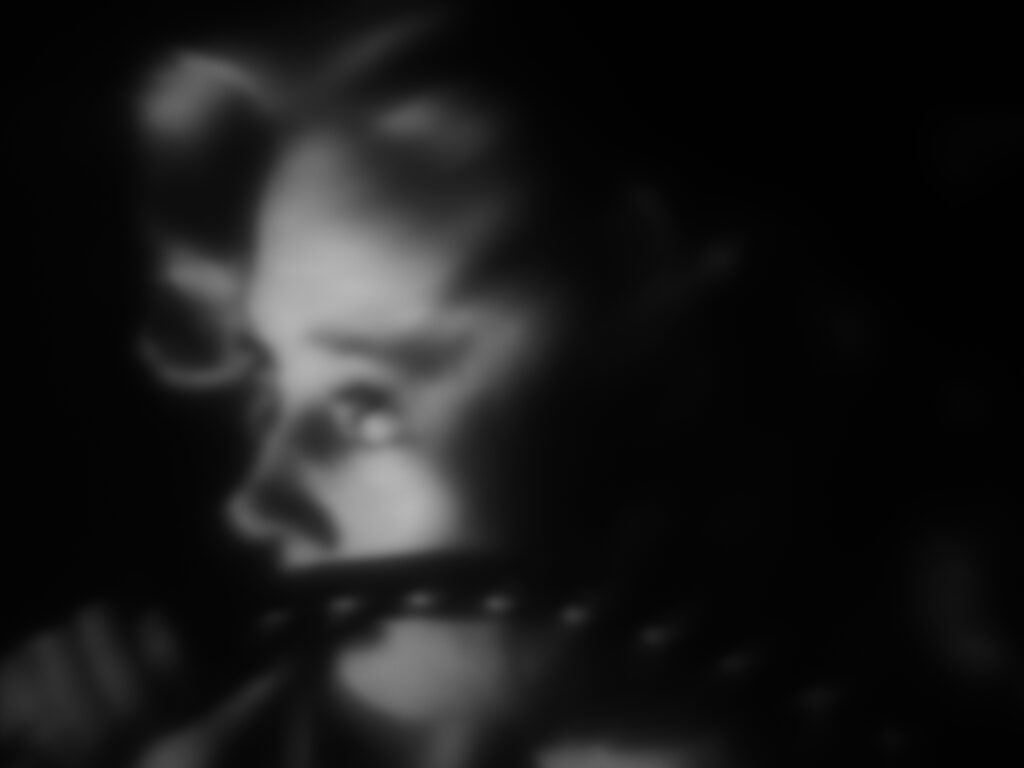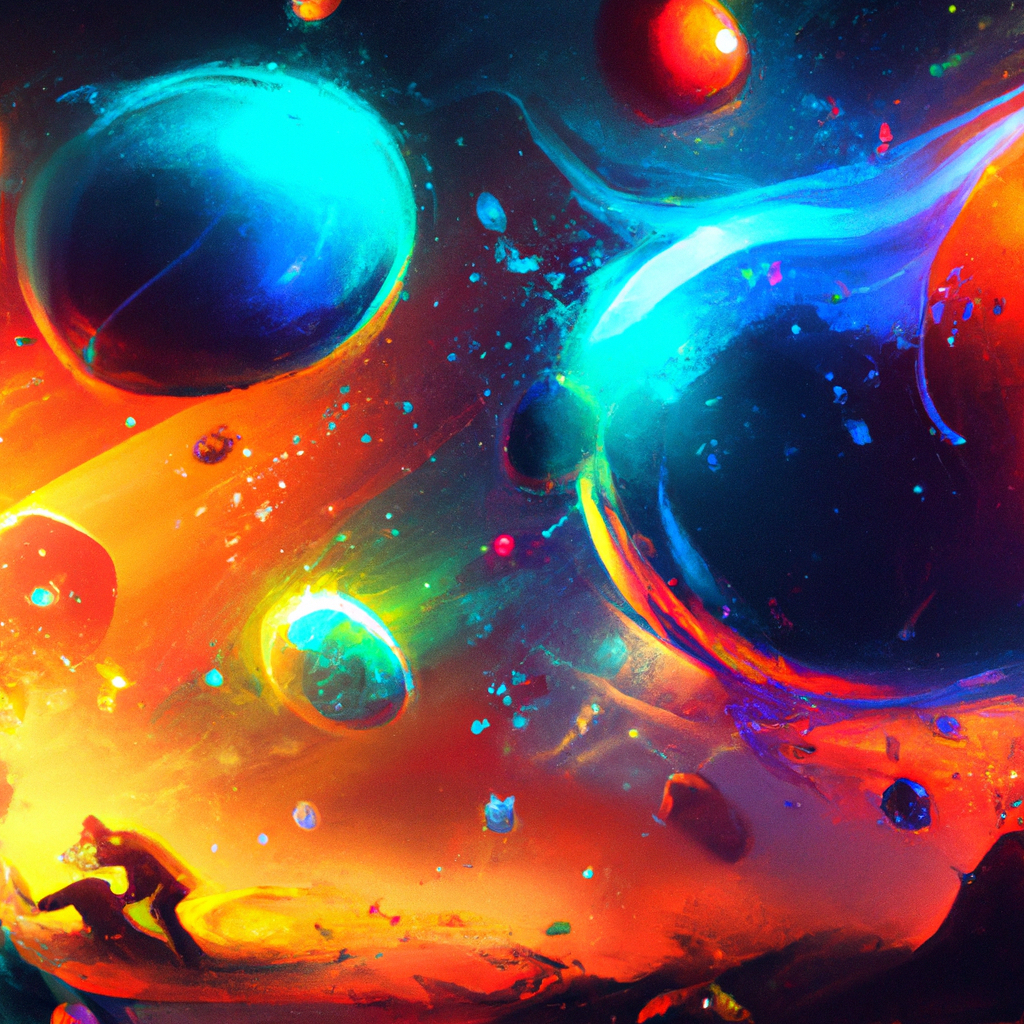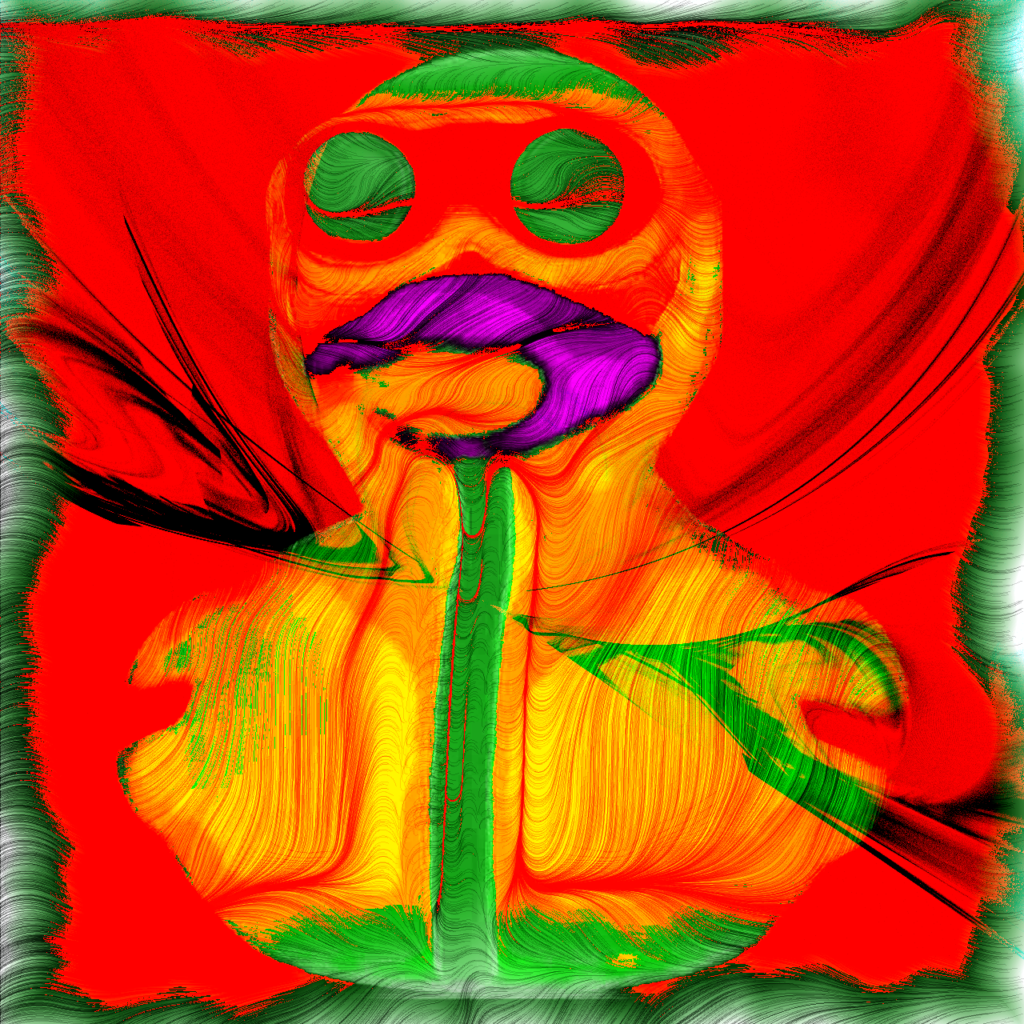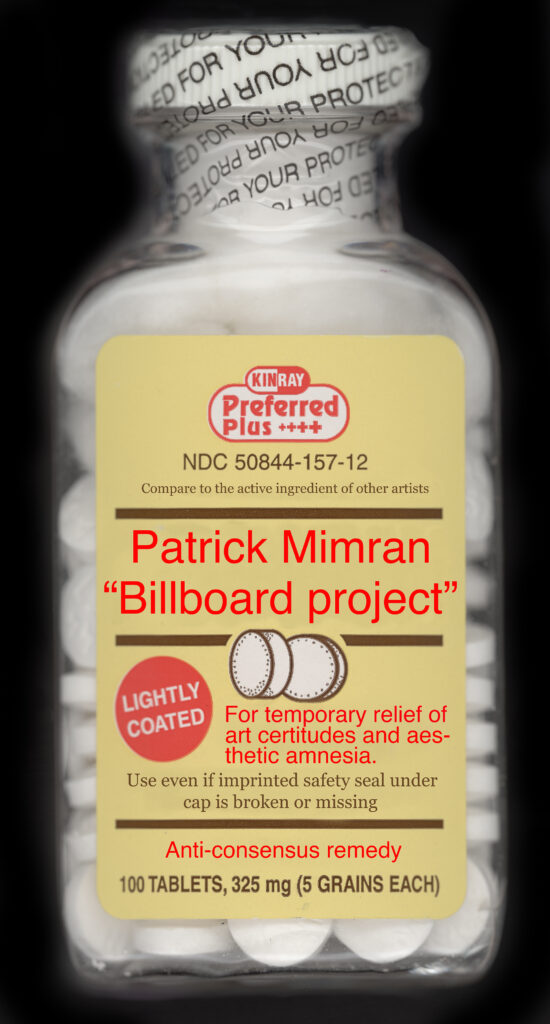
Out of Focus

By Patrick Mimran
Jan 25, 2025, 10:10:00 AM
Slightly Out of Focus
To look at Patrick Mimran's images is to give up the privilege of the obvious and the known. Mysterious and dreamlike, his photographs intertwine with reality with an intensity that invites reflection on our relationships with time and space. To enter into dialogue with these works requires a renewed energy and it is necessary to accept the condition of suspension of disbelief, so dear to Samuel T. Coleridge. Inside those soft blacks and whites is all the space to insinuate the doubt of beauty and grasp the power of fiction. It is the allure of staging. Inside the acid colors of the smaller prints, thought of as unfaithful mirrors of reality, there is instead an opportunity to think of photography as a secret passageway to another reality.
After all, Mimran himself says he does not want to submit to any realist order. There are no "decisive moments" in these photographs. There is a dilated and expanded time. There is a vibrant center so powerful and soft and moving that the viewer's eyes can get lost and, finally, rest.
The inspiration is toward film noir, and Patrick Mimran's Out of Focus project gravitates around a dualism of a mythological nature whereby woman and man represent, for all intents and purposes, the two faces of a single organism. Mimran, through the poetics of technological manipulation, wishes to heal that split in the anatomical bond that Plato, in his Symposium, traces back to the ruthlessness of Zeus. Here, the attempt to fill a lack, particularly that of one's own completeness, is combined with the desire for rebirth. In other words, Mimran creates, or rather, re-creates the empty space that forms in the transition between imagination and realization. Not only that, Mimran operates in a photographic present so intense that the concept of future and that of memory are lost in each other.
In the practical act, he decides to offer the viewer an image capable of representing the farthest possible version of the true aesthetic appearance of the subject he portrays. The characters in these shots are distorted, all concrete reference to them is erased, and they are transformed into a dreamy vision, the child of abstractionism and surrealism.
We find ourselves in the dimension of the unconscious, in a perpetual iconographic flow of indefinable figures, challenging the audience's eye to trace the original geometry. One would say a work constructed solely to leave room for ambiguity, because photography, contrary to its instrumental composure, is pure lie. Here, then, Mimran reaps the fruits of that illusion of truth and takes a fairy-tale dimension by the hand and makes it his own. On this uncontrollable limit is restored
to the viewer the sovereignty to freely interpret this reworking of reality.
Operationally, Mimran moves like a contemporary shaman because he goes beyond the material to seek the essence. He starts from a filmic still image, chosen by a very personal magnifying glass, and lets time settle on the final result. Through asymmetrical cuts, losses of sharpness and semiotic reversals, he gives back to the original subject a renewed visual virginity, capable of giving shape to a new writing, based on the feeling of harmony.
It is a continuous flow of broken gestures, unhinged from their original context, which transcend the very concept of "staging."
In Mimran, the negation of testimony accompanies the eye to the surface, draws it into a play of desires destined to remain ethereal, because that between the viewer and these images is a hinted interaction that is never completely finished. It is the thrill of suspension, generated by the feeling that something is about to happen.
Hiroshi Sugimoto with his Seascapes (1980-1990) or his panoramic views, contained in the Architecture series (1990-2000), also chooses to tell a story through an undefined form. He makes reality take another course, directs it toward a total rewriting of the usual perceptual codes. Similarly, Mimran's images are pregnant with unstructured elements, far removed from the authentic moment of the shot: the viewer is invited to find their ultimate location.
Accompanying an overwhelming path, founded on the monochromatic architecture of large-scale works, we find small-format images that synthesize from the installation character. The author places the object-photo in unusual contexts, for example, in the micro-environments of a home bathroom or in the claustrophobic shelves of a refrigerator. This contrast implements an overcoming of narrative bias, generally related to the transmission of content akin to and consistent with the narrative. On the whole, these integrative arrangements follow a trend parallel to his emotional state. Exactly like the city of New York for Saul Leiter at the turn of the 1940s and 1950s, for Mimran the incursion of color into an aseptic context, all the more dominated by black and white, synthesizes a need for intimacy. It is the mirror of his experience, a direct synthesis of an intentionality built on the pictorial gaze.
Mimran's visions ultimately focus on the essence of the human condition, which is the sum of harmony and chaos at the same time. They catalog glances, bodily ripples, blends of gestures and effusions to draw with light the complexities of the soul. They are images that clamor to be looked at, understood, breathed and adopted, as traces of our passage. There is no beginning and there is no end, just as so
in the elusive visual narratives of Duane Michals, undisputed master of that approach of deep, instinctive lightness. Here instinct reigns more than reason.
Patrick Mimran's are photographs moved by his visceral need to construct a tribute to what envelops and unsettles us. To that which cradles and drowns us. They are images that offer the possibility of renouncing documentary constraint. This is how his subjects end up chiseling our minds: one frame after another, scene after scene, they leave the marks of a succession of dedications and antithetical feelings, to land, finally, in the labyrinth of doubt.
Denis Curti - Milan. January 2024 -
Légèrement hors champ
Observer les images de Patrick Mimran, c'est renoncer au privilège de l'évidence et du connu. Mystérieuses et oniriques, ses photographies se mêlent à la réalité avec une intensité qui nous invite à réfléchir sur notre rapport au temps et à l'espace. Entrer en dialogue avec ces œuvres demande une énergie renouvelée et il faut accepter la condition de suspension de l'incrédulité, si chère à Samuel T. Coleridge. Dans la douceur des blancs et des noirs, il y a toute la place pour insinuer le doute de la beauté et saisir la puissance de la fiction. C'est la fascination de la mise en scène. Dans les couleurs acides des petits tirages, conçus comme des miroirs infidèles de la réalité, il y a au contraire la possibilité de penser la photographie comme un passage secret pour atteindre une autre réalité.
Après tout, Mimran lui-même déclare qu'il ne veut pas se soumettre à un ordre réaliste. Il n'y a pas de "moments décisifs" dans ces photographies. Il y a un temps dilaté et élargi. Il y a un centre vibrant si puissant, si doux et si émouvant que les yeux du spectateur peuvent se perdre et finalement se reposer.
L'inspiration vient du film noir et le projet Out of Focus de Patrick Mimran gravite autour d'un dualisme de nature mythologique où la femme et l'homme représentent, à toutes fins utiles, les deux faces d'un seul organisme. Mimran, par le biais de la poétique de la manipulation technologique, souhaite guérir cette rupture du lien anatomique que Platon, dans son Symposium, fait remonter à l'impitoyable Zeus. Ici, la tentative de combler un manque, notamment celui de sa propre complétude, se conjugue avec le désir de renaissance. En d'autres termes, Mimran crée, ou plutôt recrée, l'espace vide qui se forme dans la transition entre l'imagination et la réalisation. De plus, Mimran opère dans un présent photographique si intense que le concept de futur et celui de mémoire se perdent l'un dans l'autre.
En pratique, il décide d'offrir au spectateur une image qui représente la version la plus éloignée possible de la véritable apparence esthétique du sujet qu'il dépeint. Les personnages de ces clichés sont déformés, toute référence concrète est effacée, pour se transformer en une vision onirique, enfant de l'abstraction et du surréalisme.
On se retrouve dans la dimension de l'inconscient, dans un flux iconographique perpétuel de figures indéfinissables qui défient l'œil du public pour en retrouver la géométrie originelle. Il s'agirait d'une œuvre construite uniquement pour laisser place à l'ambiguïté, car la photographie, contrairement à son immobilisme instrumental, est un pur mensonge. Mimran récolte donc ici les fruits de cette illusion de vérité et prend par la main une dimension féerique pour la faire sienne. Sur cette limite incontrôlable, la souveraineté d'interpréter librement ce remaniement de la réalité est rendue à l'observateur.
D'un point de vue opérationnel, Mimran agit comme un chaman contemporain, car il va au-delà du matériel pour chercher l'essence. Il part d'un arrêt sur image filmique, choisi par une loupe très personnelle, et laisse le temps s'installer sur le résultat final. Par des coupes asymétriques, des pertes de netteté et des renversements sémiotiques, il redonne au sujet d'origine une virginité visuelle renouvelée, capable de donner forme à une nouvelle écriture, fondée sur le sentiment d'harmonie.
C'est un flux continu de gestes brisés, désarticulés de leur contexte d'origine, qui transcendent le concept même de "mise en scène".
Dans Mimran, la négation du témoignage accompagne le regard jusqu'à la surface, l'entraînant dans un jeu de désirs destinés à rester éthérés, car entre l'observateur et ces images, c'est une interaction suggérée qui n'est jamais complètement achevée. C'est le frisson de la suspension, généré par le sentiment que quelque chose est sur le point de se produire.
Hiroshi Sugimoto, avec ses Seascapes (1980-1990) ou ses vues panoramiques de la série Architecture (1990-2000), choisit également de raconter une histoire à travers une forme indéfinie. Il fait prendre à la réalité un autre cours, l'orientant vers une réécriture totale des codes habituels de la perception. De même, les images de Mimran sont pleines d'éléments déstructurés, loin du moment authentique de la prise de vue : le spectateur est invité à trouver leur emplacement ultime.
Accompagnant une trajectoire écrasante, basée sur l'architecture monochromatique des œuvres à grande échelle, nous trouvons des images de petit format qui résument le caractère de l'installation. L'auteur place l'objet-photo dans des contextes inhabituels, par exemple dans les micro-environnements d'une salle de bain domestique ou dans les étagères claustrophobes d'un réfrigérateur. Ce contraste met en œuvre un dépassement du biais narratif, qui est généralement lié à la transmission de contenus liés et cohérents avec l'histoire. Dans l'ensemble, ces installations intégratives suivent un parcours parallèle à leur état émotionnel. Tout comme la ville de New York pour Saul Leiter au tournant des années 1940 et 1950, l'incursion de la couleur dans un contexte aseptisé, d'autant plus dominé par le noir et blanc, synthétise pour Mimran un besoin d'intimité. Elle est le miroir de son expérience, la synthèse directe d'une intentionnalité construite sur le regard pictural.
Les visions de Mimran se concentrent finalement sur l'essence de la condition humaine, qui est la somme de l'harmonie et du chaos en même temps. Elles cataloguent des regards, des ondulations corporelles, des mélanges de gestes et d'effusions pour dessiner les complexités de l'âme avec la lumière. Ce sont des images qui réclament d'être regardées, comprises, respirées et adoptées, comme des traces de notre passage. Il n'y a ni début ni fin, comme dans les récits visuels insaisissables de Duane Michals, maître incontesté de cette approche de la légèreté profonde et instinctive. Ici, l'instinct règne plus que la raison.
Les photographies de Patrick Mimran sont guidées par son besoin viscéral de construire un hommage à ce qui nous enveloppe et nous déstabilise. À ce qui nous berce et nous noie. Ce sont des images qui offrent la possibilité de renoncer à la contrainte documentaire. C'est ainsi que ses sujets finissent par ciseler nos esprits : image après image, scène après scène, ils laissent les traces d'une succession de dédicaces et de sentiments antithétiques, pour finalement atterrir dans le labyrinthe du doute.
Denis Curti - Milan. Janvier 2024
Leggermente Fuori fuoco
Osservare le immagini di Patrick Mimran significa rinunciare al privilegio della dell’ovvio e del conosciuto. Misteriose e oniriche, le sue fotografie si intrecciano con la realtà con una intensità che invita a riflettere sulle nostre relazioni con il tempo e con lo spazio. Per entrare in dialogo con queste opere serve una rinnovata energia ed è necessario accettare la condizione della sospensione dell’incredulità, tanto cara a Samuel T. Coleridge. Dentro quei bianchi e neri morbidi c’è tutto lo spazio per insinuare il dubbio della bellezza e cogliere la potenza della finzione. E’ il fascino della messa in scena. Dentro i colori acidi delle stampe più piccole, pensate come specchi infedeli della realtà, c’è invece l’occasione di pensare alla fotografia come a un passaggio segreto per raggiungere una realtà altra.
Del resto, lo stesso Mimran afferma di non voler sottostare ad alcun ordine realista. Non ci sono “momenti decisivi” in queste fotografie. C’è un tempo dilatato ed espanso. C’è un centro vibrante così potente e morbido e commovente che fa sì che gli occhi di chi guarda si possano perdere e, finalmente, riposare.
L’ispirazione è verso il cinema noir e il progetto Out of Focus di Patrick Mimran gravita attorno a un dualismo di carattere mitologico per cui la donna e l’uomo rappresentano, a tutti gli effetti, le due facce di un solo organismo. Mimran, attraverso la poetica della manipolazione tecnologica, desidera sanare quella scissione del legame anatomico che Platone, nel suo Simposio, riconduce alla spietatezza di Zeus. Qui, il tentativo di colmare una mancanza, in particolare quella della propria completezza, si unisce al desiderio di rinascita. In altre parole, Mimran crea, o meglio, ri-crea lo spazio vuoto che si forma nel passaggio tra immaginazione e realizzazione. Non solo, Mimran opera in un presente fotografico talmente intenso che il concetto di futuro e quello di memoria si perdono l’uno nell’altra.
All’atto pratico decide di offrire all’osservatore un’immagine capace di rappresentare la versione più lontana possibile dal vero aspetto estetico del soggetto che ritrae. I personaggi di queste riprese vengono distorti, ne viene cancellato ogni riferimento concreto, per trasformarsi in una visione sognante, figlia dell’astrattismo e del surrealismo.
Ci troviamo nella dimensione dell’inconscio, in un perpetuo fluire iconografico di figure indefinibili, che sfidano l’occhio del pubblico a rintracciare la geometria originaria. Si direbbe un’opera costruita unicamente per lasciare spazio all’ambiguità, perchè la fotografia, contrariamente alla sua compostezza strumentale, è pura menzogna. Ecco allora che Mimran raccoglie i frutti di quella illusione di verità e prende per mano una dimensione fiabesca e la fa propria. Su questo limite incontrollabile viene restituita all’osservatore la sovranità di interpretare liberamente questa rielaborazione della realtà.
Dal punto di vista operativo Mimran si muove come uno sciamano contemporaneo, perché va oltre la materia per cercare l’essenza. Parte da un fermo immagine filmico, prescelto da una personalissima lente di ingrandimento, e lascia che il tempo si depositi sul risultato finale. Attraverso tagli asimmetrici, perdite di nitidezza e capovolgimenti semiotici, riconsegna al soggetto originario una rinnovata verginità visiva, capace di dare forma a una nuova scrittura, basata sul sentimento dell’armonia.
È un flusso continuo di gestualità spezzate, scardinate dal contesto originario, che travalicano il concetto stesso di “messa in scena”.
In Mimran la negazione della testimonianza accompagna l’occhio in superficie, lo attira in un gioco di desideri destinati a rimanere eterei, perché quella tra l’osservatore e queste immagini è una interazione accennata e mai completamente finita. E’ il brivido della sospensione, generato dalla sensazione che qualcosa stia per accadere.
Anche Hiroshi Sugimoto con i suoi Seascapes (1980-1990) o i suoi scorci panoramici, contenuti nella serie Architecture (1990-2000), sceglie di narrare una storia attraverso una forma indefinita. Fa prendere alla realtà un altro corso, la instrada verso una riscrittura totale dei consueti codici percettivi. Allo stesso modo le immagini di Mimran sono pregne di elementi destrutturati, molto distanti dal momento autentico dello scatto: chi le osserva è invitato a trovarne una collocazione ultima.
A corredo di un percorso travolgente, fondato sull’architetture monocromatica di opere di grandi dimensioni, troviamo delle immagini di piccolo formato che sintetizzano dal carattere installativo. L’autore immette l’oggetto-foto in contesti inusuali, per esempio nei micro-ambienti di un bagno casalingo o nei ripiani claustrofobici di un frigorifero. Questo contrasto attua un superamento del pregiudizio narrativo, generalmente collegato alla trasmissione di contenuti affini e coerenti al racconto. Nel complesso questi allestimenti integrativi seguono un andamento parallelo al suo stato emotivo. Esattamente come la città di New York per Saul Leiter, a cavallo tra gli anni Quaranta e gli anni Cinquanta, anche per Mimran l’incursione del colore in un contesto asettico, tanto più dominato dal bianco e nero, sintetizza un bisogno di intimità. È lo specchio del suo vissuto, sintesi diretta di una intenzionalità costruita sullo sguardo pittorico.
Le visioni di Mimran, in ultima analisi, si concentrano sull’essenza della condizione umana, che è la somma di armonia e caos allo stesso tempo. Catalogano sguardi, increspature corporee, mescolanze di gesti ed effusioni per disegnare con la luce le complessità dell’anima. Sono immagini che chiedono a gran voce di essere guardare, capite, respirate e adottate, in quanto tracce del nostro passaggio. Non c’è inizio e c’è fine, così come così come nelle inafferrabili narrazioni visive di Duane Michals, maestro indiscusso di quell’approccio di profonda e istintiva leggerezza. Qui conta regna l’istinto più che la ragione.
Quelle di Patrick Mimran sono fotografie mosse dal suo bisogno viscerale di costruire un tributo a ciò che ci avvolge e sconvolge. A ciò che ci culla e ci affoga. Sono immagini che offrono la possibilità di rinunciare vincolo documentario. È così che i suoi soggetti finiscono per cesellare la nostra mente: un frame dietro l’altro, scena dopo scena, lasciano i segni di un susseguirsi di dediche e di sentimenti antitetici, per approdare, finalmente, nel labirinto del dubbio.
Denis Curti - Milano. Gennaio 2024 –

Queens and Ducks
12 Jun 2025
Some unusefull thoughts
10 May 2025
Art Billboard Project Milan
21 Jan 2025
Why Abstraction in my painting process
14 Jan 2025
Artificial intelligence or natural stupidity ?
25 Jan 2025
My NFTON.market platform and Digital images
25 Jan 2025